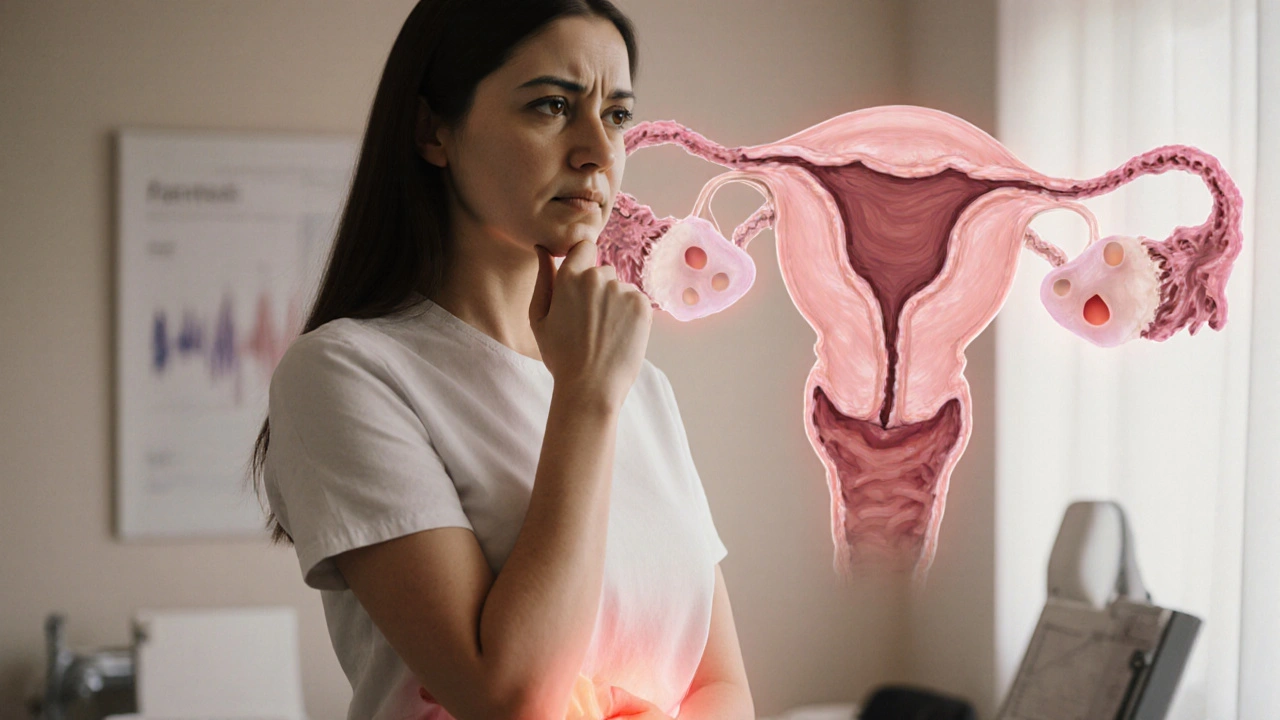Uterine Fibroids: Causes, Symptoms, and Treatment Options
When dealing with uterine fibroids, benign smooth‑muscle tumors that grow inside the uterus. Also known as myomas, they can cause heavy periods, pelvic pain, and pressure on nearby organs. Understanding fibroids means looking at the hormones that drive them, the medical procedures that can remove them, and the lifestyle tweaks that may ease symptoms.
Key Factors Influencing Fibroid Development
One of the biggest players is hormone therapy, the use of estrogen‑and‑progesterone medications to manage menopause or other conditions. While hormone therapy can relieve hot flashes, it may also stimulate fibroid growth because fibroids are estrogen‑responsive. Conversely, surgical treatment, procedures like myomectomy or hysterectomy that physically remove fibroid tissue offers a direct way to eliminate the tumors and stop symptoms. Many patients weigh the benefits of each based on age, desire for fertility, and symptom severity.
Another angle is natural supplements, herbal or nutritional products such as vitamin D, green tea extract, and omega‑3 fatty acids. Some studies suggest these can modestly lower estrogen levels or reduce inflammation, which may slow fibroid growth. While supplements aren’t a cure, they can complement medical care, especially for women who prefer a less invasive approach.
Symptoms themselves guide the treatment path. Heavy bleeding often leads doctors to recommend a hormonal IUD or tranexamic acid to control flow. Pelvic pressure or pain may push a patient toward minimally invasive surgery, like laparoscopic or hysteroscopic removal, which shortens recovery. Fertility concerns add another layer: myomectomy preserves the uterus, while uterine artery embolization can shrink fibroids without cutting tissue, though it may affect future pregnancies.
Beyond medical options, lifestyle tweaks matter. Regular exercise, a balanced diet low in processed sugars, and adequate sleep help maintain hormonal balance. Stress reduction techniques such as yoga or mindfulness can lower cortisol, which indirectly influences estrogen pathways. These daily habits often appear in the same articles that discuss medication choices, underscoring the holistic nature of fibroid care.
Below you’ll find a curated selection of articles that dive deeper into each of these aspects—whether you’re curious about the latest drug therapies, want a step‑by‑step guide to surgical options, or are exploring natural ways to support uterine health. This collection gives you practical insights to make informed choices about managing uterine fibroids.
How Low Progesterone Fuels Uterine Fibroids - Causes & Solutions
Explore why progesterone deficiency triggers uterine fibroids, how hormones interact, symptoms, diagnosis and the best treatment pathways.
read more